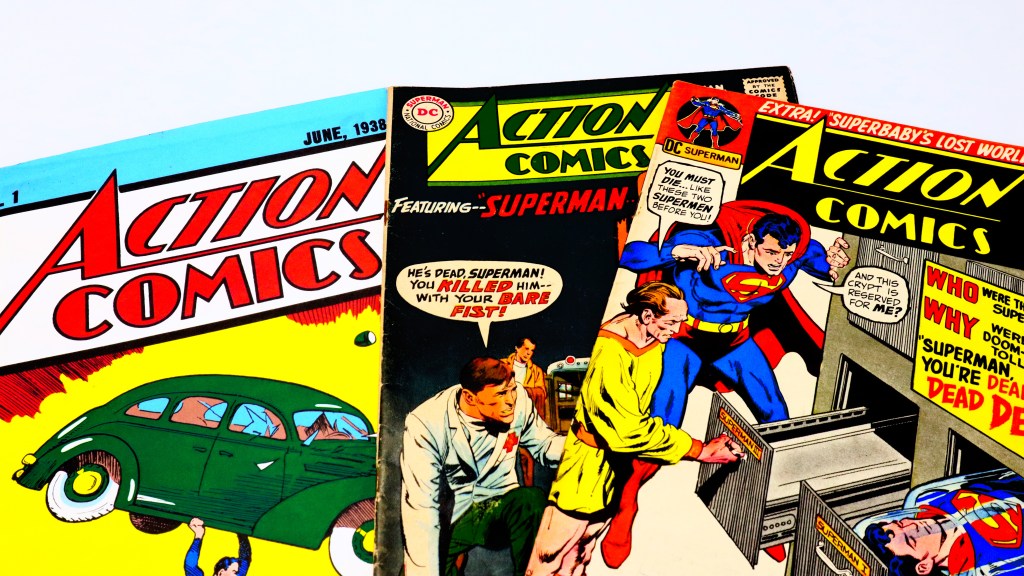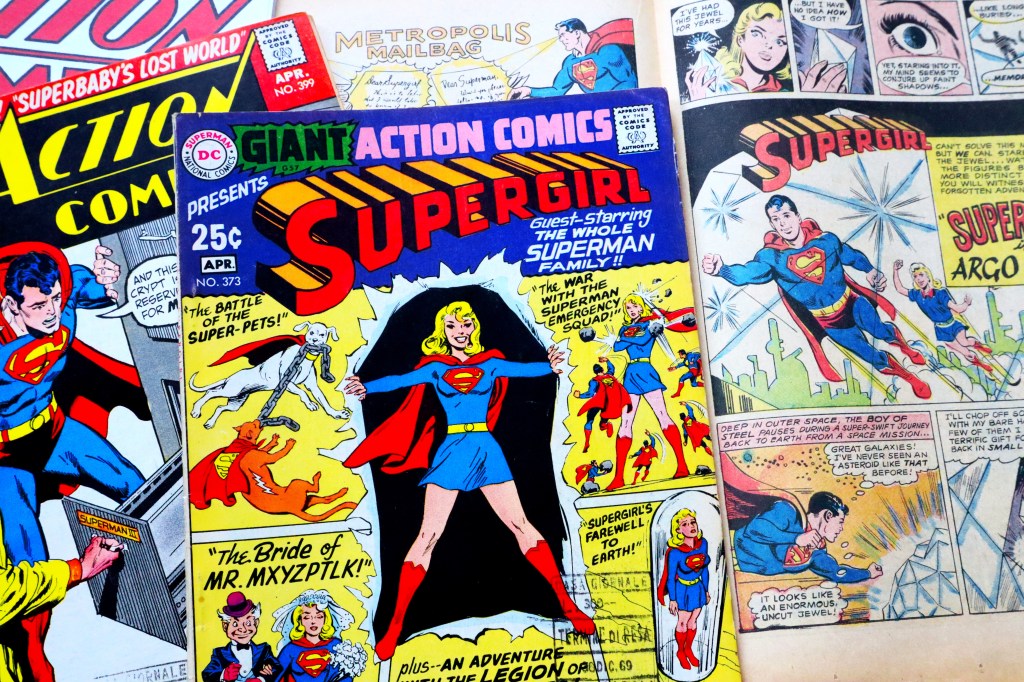
Examining Vintage Comic Books and Their Value

Examining Vintage Comic Books and Their Value
Vintage comic books, also known as golden age or silver age comics, are a popular collectible item. These are in high demand among collectors, and since they are older they are also quite rare. The most valuable books from this time period often feature the first appearance of many beloved comic characters, such as Superman, Batman, Iron Man, The Incredible Hulk, Wonder Woman, and more. Many of these books were published by well-known comic publishers such as action comics, Marvel, DC, and more.
We’re diving into vintage comics and talking about why you should get them graded and how to sell them. We’re also sharing some of the most rare and valuable vintage comic books of all time.

Grading a Vintage Comic Book
Comic grading companies typically grade comics on a scale of 1-10, with 1 being poor conditiona and 10 being gem mint. Graders will examine the printing, the binding, the colors, and whether or not any fading has occurred in order to issue a score. Graded comic books sell better because their condition has been verified by a third party.
What is Considered Vintage?
Vintage comics books are generally considered those published before the 1970s, with most collectors being interested in books that were published between the 1930s to the mid-1970s. When examining a vintage book, check the cover price. A vintage book will have 10c, 12c, 15c, 20c, or 25c on the cover.
Comics Throughout History
Vintage comic books are typically fall into the comic book ages of golden age or silver age comics. Golden age comics are from 1938-1956, while silver age comics are from 1956-1970. Victorian age comics are those that fall between 1842–1897, platinum age is 1897–1938, bronze age is 1970–1985, and modern age is 1985 – present.
How Do I Buy or Sell Vintage Comic Books at an Auction?
Before selling your comics, it’s important to get them graded, especially if they are high-value comics. Graded books tend to sell better than ungraded ones. Then, decide where you want to sell your book. You could select a brick and mortar auction house, but there are also plenty of online auction houses where you can sell. Sell your most valuable comic books on reputable sites such as Heritage Auction. Your less expensive books can be sold on sites such as eBay.

12 Rare and Highly Valuable Comics
There are some comics that are known for being especially valuable. They are often the first edition of a comic, or they feature the first appearance of a beloved comic character. Here are twelve rare comic books that are highly coveted and worth big bucks.
Action Comics #1 – Worth about $3.2 million
There are fewer than 100 of this comic book still in existence, and they originally sold for about 10 cents a copy. This issue, published in 1938, was the first introduction of Superman.
Detective Comics #27 – Worth about $2.1 million
In 1939, just one year after Superman was introduced, Batman was introduced in Detective Comics #27. There are less than 200 of this book still in existence, making it a rare and in demand piece for serious comic book collectors.
Marvel Comics #1 – Worth about $1.2 million
This issue contains the first appearance of Sub-Mariner and the Human Torch. This comic is one of the rarest in the world, with only 26 of them in their original condition.
Amazing Fantasy #15 – Worth about $1.1 million
This 1960s comic contains the first appearance of Spider-Man. It sold so well that Spider-Man’s story was continued. This comic is in very high demand among comic book collectors.
All-Star Comics #8 – Worth about $936,000
This 1941 comic introduced the world to Wonder Woman. It’s hard to find a copy of this comic in good condition.
Batman #1 – Worth about $567,000
In 1940, the popular Batman character was given his own comic book. This first issue, which is in high demand today, featured key characters such as the Joker and Catwoman.
Superman #1 – Worth about $507,000
Superman was given his own series in 1939, and this original book is sought after by collectors. There are fewer than 200 in existence.
X-Men #1 – Worth about $492,000
This 1963 comic book has a white cover and it hard to find in good condition. It marks the introduction of the X-Men.
Flash Comics #1 – Worth about $450,000
In 1940, Flash Comics #1 introduced a new superhero called the Flash. This particular comic is popular with collectors.
Sensation Comics #1 – Worth about $399,000
This 1942 comic is the first appearance of the popular heroine, Wonder Woman. They are rare to find in good condition.
Pep Comics #22 – Worth about $375,000
This 1941 comic introduced the classic character, Archie. It’s hard to find one of these in good condition.
The Incredible Hulk #1 – Worth about $375,000
It’s hard to find an edition of this comic in good condition, but in and of itself, it isn’t especially rare. This book features a beloved character, The Incredible Hulk.
Tales of Suspense #39 – Worth about $350,000
This comic book from 1959 features the first appearance of Iron Man.
Insure Your Vintage Comic Books
If you have a collection of comic books, it’s important to have the right insurance coverage to protect them in the event of the unexpected. Find the best comic book insurance and give yourself the gift of peace of mind.
Sources
https://antiques.lovetoknow.com/Rare_Comic_Books
https://www.potteriesauctions.com/news/are-my-vintage-comic-books-worth-anything
About Collectibles Insurance Services
Collectibles Insurance Services has been protecting collections since 1966 and all coverage is provided by a carrier with a group rating of “A” (Excellent) by AM Best, the leading rating agency for the insurance industry.
Comprehensive coverage includes, but is not limited to: accidental breakage, burglary, fire, flood, loss in the mail, theft, natural disasters, and other causes of loss unless specifically excluded from the policy. Deductibles start at $0 for collector policies and we provide coverage for the market value of your collection for losses in excess of $50.
Additionally the protection extends At home and away, and we don't require collection itemization and serial number nor extensive paperwork and red tape.
